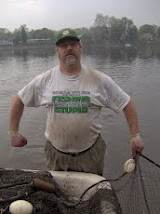RAPIDS, NOT RIFLES |
| at Doi Inthanon |
We opted to take a day
trip to hike at Thailand’s Doi Inthanon National Park rather than explore the
city of Chiang Mai, even though it was an added excursion. Overseas Adventure
Travel (OAT) arranged for us to travel to Thailand’s most popular park with a
guide for $210 for the both of us.
Famous for its
waterfalls, vistas and birdwatching, the nickname of Doi Inthanon National Park
is “the Roof of Thailand”. The park is part of the Himalayan mountains, with
peaks ranging from 800 meters to Doi Inthanon itself at 2,535 meters in
elevation. In comparison, Mt. Everest rises to 8,848 meters and so our hike, which
started at a much lower elevation, was just a walk in the park, and thankfully mostly
downhill.
 |
walking sticks
Doi Inthanon |
The trail was
well-marked and maintained and before we headed off, we had our choice of
bamboo staves to use as walking sticks. Our guide spoke with an American accent
and the first thing he pointed out was it will be safe. No longer will there be
men with machine guns guarding the opium trade that flourished here for
decades. This was a bit unnerving at first but armed with this good news we proceeded.
THE PLANT OF JOY
Opium cultivation has
gone on for millennia. The Sumerians called the plant “Hul Gil”, or the plant
of joy. Opium had been cultivated in southeast Asia for centuries as well and
was used in moderation by local communities, like the Hmong and Karen, as a
part of their culture. Opium though was the only available cash crop and the
impoverished highlanders and others who migrated into the area began to grow a
lot of poppy plants.  |
| poppy |
THE GOLDEN TRIANGLE
This mountainous region
where Thailand, Burma (Myanmar) and Laos meet was once the world’s largest
producer of opium. At its height in the 1960s 145 tons of opium were produced
annually. Even though Thailand banned opium in 1958, the illicit trade would
simply shift to Laos, or Burma, or eventually back to Thailand depending on the
political climate. Back then there were more guns and warlords than tourists in
the Golden Triangle, but that has all changed today, at least in Thailand.
FROM POPPY TO COFFEE
Starting in 1969 on the
initiative started by King Bhumibol Adulyade the idea of alternative planting
was begun. Wishing to solve the problems caused by deforestation, because slash-and-burn
agriculture was the prevalent method of opium farming, the illicit trade of
opium production and the poverty that the people of the area never rose above, the
King pushed the idea of replacing drug-crops with legal sustainable crops. Legal
crops like coffee, rice, fruits like pomelo, longan or dragon’s eye fruit,
strawberries and even peaches, and vegetables like carrots, cabbage and
Japanese pumpkin have proved to be as lucrative as the opium trade, but without
the risk of conducting criminal activities. |
| our guide |
Along with this
alternative approach to farming the Royal Project addresses illiteracy and
public health in the remote mountains.
So, indeed the dark
times of the commerce of opium in Thailand were behind us and we were able to
enjoy our hike through Doi Inthanon without fear.
STRAWBERRY FIELDS
FOREVER
After a short up-hill
climb our hike was all downhill. The bamboo staves cut for just this purpose
came in handy as some of the terrain was rootbound and uneven. Some of the
descent was narrow and steep, but there were wooden railings at some of the
more treacherous stretches. |
strawberry field
Doi Inthanon |
Our local guide pointed
out different plants and told us about the animals in the park, including
several species of monkeys, although we saw nothing but the local flora and fauna.
Evidently Doi Inthanon is a birders paradise, but we were just a noisy group
tramping through the forest enjoying the fresh air and several majestic
waterfalls.
We passed an open field
that was being tended to by members of the Karen tribe, but it was strawberries
not opium. We got some samples and purchased some to nibble on as we trekked. One
could easily imagine poppy plants flourishing here at one time.
IT TAKES A VILLAGE
Nearing the end of our
hike the forest gave way to a valley of terraced rice paddies and coffee trees.
The trail followed an aqueduct to our guide’s village. Mae Klang Luang. At a crossroads
an enterprising tourist stand was set up and a woman was weaving cloth using a
backstrap loom while other women presided over rows of the finished product.
Janet bought one to use as a table runner and insisted the weaving woman pose
for a picture with the selected artisan cloth.
Included in the cost of
the excursion was a hearty lunch. We enjoyed our meal while looking out on the
most idyllic scenery. Despite the very rural setting, the restaurant had
pristine modern bathrooms for guests. No doubt this was part of the infrastructure
support given to the hill tribes as part of the Royal Project.The last stop before we
returned to Chiang Mai was the coffee shop. There were several other groups
enjoying free samples of coffee being brewed by the largest chorreador I had
ever seen. Water was poured over a large sack filled with coffee grinds and
allowed to drip into a pot. We had several cups and then bought a sealed packet
of their coffee to take home. We had so much caffeine Janet decided to run
alongside the van for a while.
Thanks for reading.
 |
| terraced rice paddies |
 |
| our view at lunch |
 |
| coffee shop! |
 |
| coffee Thai style |
Love Janet and greg
© 2025 by Gregory Dunaj












































No comments:
Post a Comment